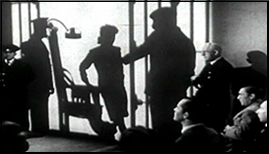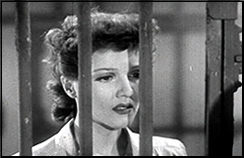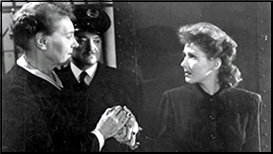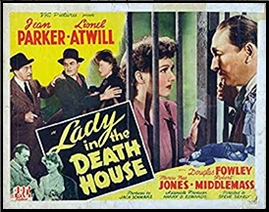Mon 18 Feb 2019
A Movie Review by Dan Stumpf: MURDER IN THE PRIVATE CAR (1934).
Posted by Steve under Mystery movies , Reviews[6] Comments
MURDER IN THE PRIVATE CAR MGM, 1934. Charlie Ruggles, Una Merkel, Mary Carlisle, Russell Hardie, Porter Hall, Burton Churchill — and Ray Corrigan as Naba the Gorilla. Screenplay by Ralph Spence, Edgar Allen Woolf, Al Boasberg, and Harvey Thew, from a play by Edward E. Rose. Directed by Harry Beaumont.
If you only watch one movie in your entire life, it should be Murder in the Private Car.
Charming Charlie Ruggles, in a rare star turn, plays Godfrey D. Scott, Crime Deflector (i.e., he deflects crimes before they happen). Scott, in his own off-hand way, involves himself with the case of Ruth Raymond (Carlisle) who has recently been identified as a missing heiress and subject to all sorts of dire attempts, especially since she boarded the private car of an eastbound train to meet her father (Churchill) along with her friend and former co-worker Una Merkel.
Ah yes, Una Merkel, an over-underrated actress normally stuck in supporting roles as the heroine’s best friend. Here she plays… well, she plays the heroine’s best friend again, but in this case the part is a co-starring one as she sneaks zingers at Charlie Ruggles and looks amusingly askance at his bumbling antics. Indeed the two of them play off each other so well, I wonder no one thought to co-star them in a series.
Car doesn’t give them much time for witty repartee, though. Not with a plot that moves like an express train (sorry!) once the principals get on board the private car, only to find one peril after another hurled at them as fast as Charlie can deflect: A kidnapping attempt, secret passages, hands clutching in the dark, threatening notes and sinister whispers, a murder or two, and an escaped Gorilla just to liven things up a bit.
I’m not familiar with the original play this was based upon, but knowing the work of Ralph Spence as I do, I’m sore tempted to attribute the sliding panels and gorilla to him, and I think anyone who’s seen any version of The Gorilla will agree. And I’ll wrestle anyone in the crowd who says it ain’t. Any takers? I thought not!
Getting back to the movie, it chugs along nicely to a marvelous climax with the principal characters trapped in a runaway car filled with nitroglycerine hurtling down the tracks toward the approaching Westbound Express (The folks at MGM knew how to pile it on.) a sequence done in obvious back-projection, but done so well I found myself gasping, jumping, and laughing with relief at the climax.
Murder in the Private Car lacks the star power to make it remembered much these days, but it’s a film that once seen & enjoyed, will not be forgotten.
Particularly if, as I say, it’s the only film you ever see in your entire life.



